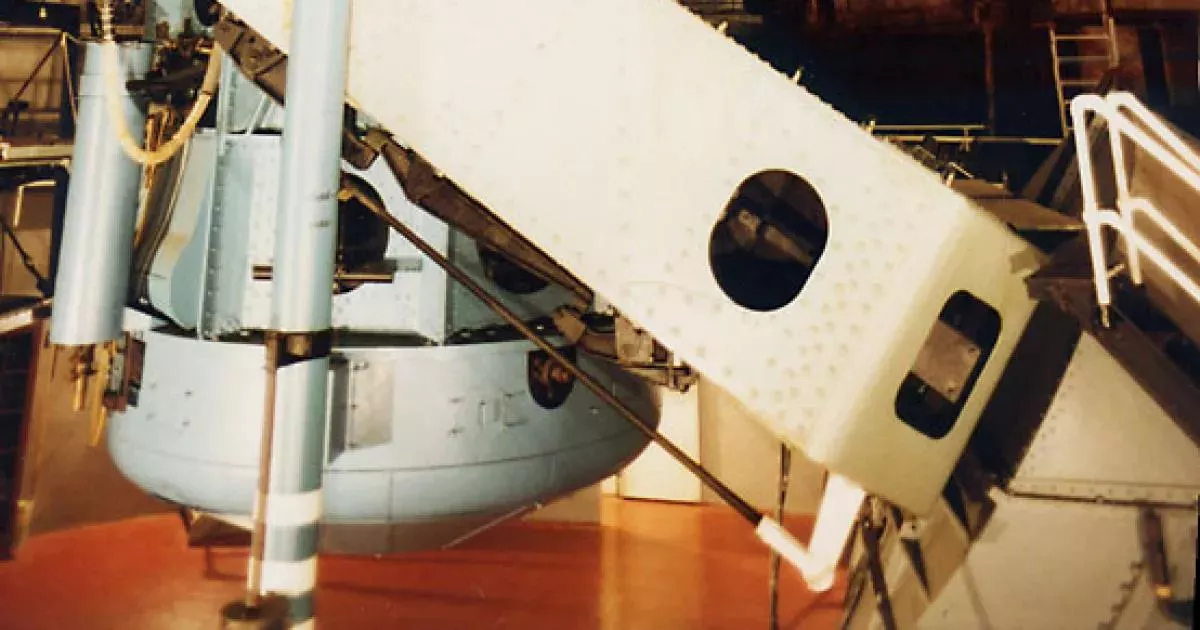A telescope is an instrument used to observe distant objects by detecting electromagnetic radiation they emit, absorb, or reflect. Initially, optical telescopes used lenses and/or mirrors for observing visible light. Currently, the term encompasses a broad range of instruments that can detect various parts of the electromagnetic spectrum, and even non-electromagnetic signals.
1932: Introduction of aluminized mirrors
In 1932, aluminized mirrors were introduced to reflecting telescopes, alleviating the tarnishing issues associated with speculum metal mirrors used in the 18th and early 19th centuries.
1937: First purpose-built radio telescope in operation
In 1937, the first purpose-built radio telescope went into operation, marking a significant development in astronomical instrumentation during the 20th century.
1952: Hans Wolter outlines telescope designs using glancing mirrors
In 1952, Hans Wolter outlined three ways a telescope could be built using only ring-shaped 'glancing' mirrors made of heavy metals, which are able to reflect rays at just a few degrees, as a form of X-ray optics.
2005: Record array size using space-based VLBI telescopes
As of 2005, the record array size for astronomical interferometers is many times the diameter of the Earth, achieved using space-based very-long-baseline interferometry (VLBI) telescopes like the Japanese HALCA (Highly Advanced Laboratory for Communications and Astronomy) VSOP (VLBI Space Observatory Program) satellite.
June 2008: Launch of the Fermi Gamma-ray Space Telescope
In June 2008, the Fermi Gamma-ray Space Telescope was launched. This type of telescope is usually installed on high-flying balloons or Earth-orbiting satellites.
2012: Discovery allowing focusing gamma-ray telescopes
In 2012, a discovery was made that may allow focusing gamma-ray telescopes, because at photon energies greater than 700 keV, the index of refraction starts to increase again.
2012: Launch of the NuSTAR X-ray Telescope
In 2012, the NuSTAR X-ray Telescope was launched. It uses Wolter telescope design optics at the end of a long deployable mast to enable photon energies of 79 keV.
December 25, 2021: Launch of the James Webb Space Telescope
On December 25, 2021, the James Webb Space Telescope was launched from Kourou, French Guiana. This telescope is designed to detect infrared light.
Mentioned in this timeline
NASA the National Aeronautics and Space Administration is an independent...

The James Webb Space Telescope JWST is the largest space...

Earth the third planet from the Sun is unique in...
Trending
Brady Cook is an American football quarterback currently playing for the New York Jets in the NFL Before joining the...

7 months ago Lewis Pullman's Sentry costume revealed for 'Thunderbolts' in exclusive first look and interviews.
16 days ago StubHub Holdings Faces Investigation for Potential Securities Fraud; Law Firms Alert Investors.
21 days ago Diane Keaton Defended Woody Allen Until Death Despite Abuse Allegations, Sources Say
1 month ago Rocket Lab's Q3 2025 Results: Record Revenue Growth Fuels Stock Surge.

8 days ago Alexander Skarsgård reminds Miriam Margolyes of their meeting; addresses sexuality question, states 'not really' gay.
Popular

Candace Owens is an American conservative political commentator and author...

Ilhan Omar is an American politician currently serving as the...

XXXTentacion born Jahseh Dwayne Ricardo Onfroy was a controversial yet...
Matt and Ross Duffer known as the Duffer Brothers are...

Tom Cotton is an American politician and Army veteran currently...
The Kennedy Center Honors are annual awards recognizing individuals and...
